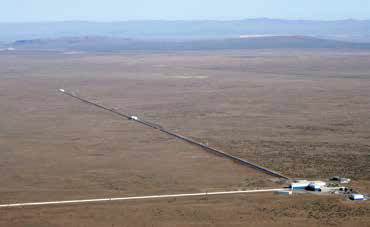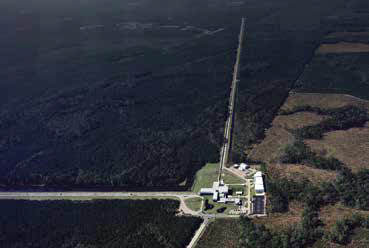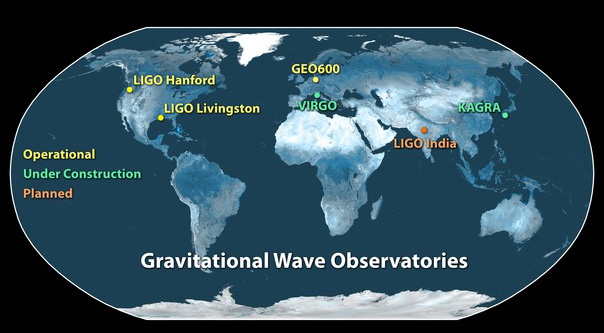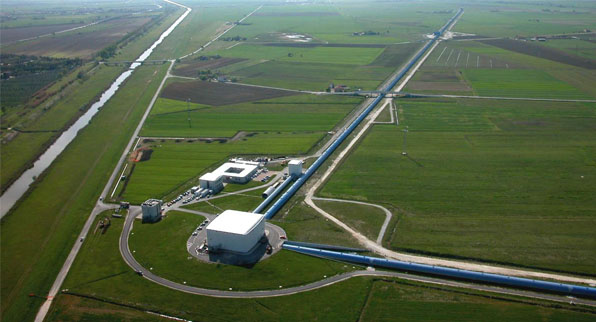LIGO
The two LIGO (Laser Interferometer Gravitational-wave Observatory) interferometers are similar in principle to the Michelson interferometers used for many laboratory measurements. They have been joined by the VIRGO interferometer in Italy.
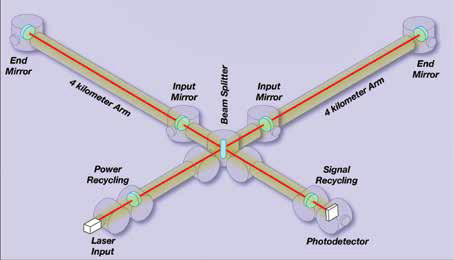 Basic design of the LIGO interferometers. Credit: LIGO/Shane Larson |
The description on the Caltech site is: "At each observatory, the two-and-a-half-mile (4-km) long L-shaped LIGO interferometer uses laser light split into two beams that travel back and forth down the arms (four-foot diameter tubes kept under a near-perfect vacuum). The beams are used to monitor the distance between mirrors precisely positioned at the ends of the arms. According to Einstein's theory, the distance between the mirrors will change by an infinitesimal amount when a gravitational wave passes by the detector. A change in the lengths of the arms smaller than one-ten-thousandth the diameter of a proton (10-19 meter) can be detected."
References:
LIGO, NSF discussion
Caltech news release, February 11, 2016
| LIGO interferometers |
| Animation of LIGO operation |
Fundamental force concepts
| HyperPhysics***** Quantum Physics | R Nave |
